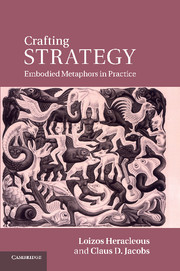Vignette F - World Vision New Zealand
Making Strategy in a Day
Published online by Cambridge University Press: 05 June 2011
Summary
Context and goal
In February 2010, the newly appointed CEO of World Vision New Zealand – an international humanitarian relief and development agency – convened a one-day meeting of all 120 staff throughout New Zealand with the aim of “creating a strategic plan in a day.” He had spent the month since joining the organization listening to staff and supporters, who repeatedly told him the organization lacked a strategic direction and focus. However, he had also become convinced that the staff and supporters shared a clear, compelling yet unarticulated strategic direction that required a forum and adequate form for its expression. He hoped that over the course of one day, through a range of activities including constructing embodied metaphors, play, storytelling, workshops, music and video, the vision and priorities would emerge and could then be structured into a new strategic plan. He was trusting that the momentum of the day, coupled with the “unorthodox” strategy development methods would enable the collective generation of a vision as well as a broad staff consensus on priorities.
Embodied metaphors
The day started with three cross-organizational staff teams presenting their embodied metaphors for “Where the organization has come from.” The teams, comprising seven to ten people in each, were drawn from across the organization and prior to the day commencing had met to develop their models.
- Type
- Chapter
- Information
- Crafting StrategyEmbodied Metaphors in Practice, pp. 204 - 208Publisher: Cambridge University PressPrint publication year: 2011



